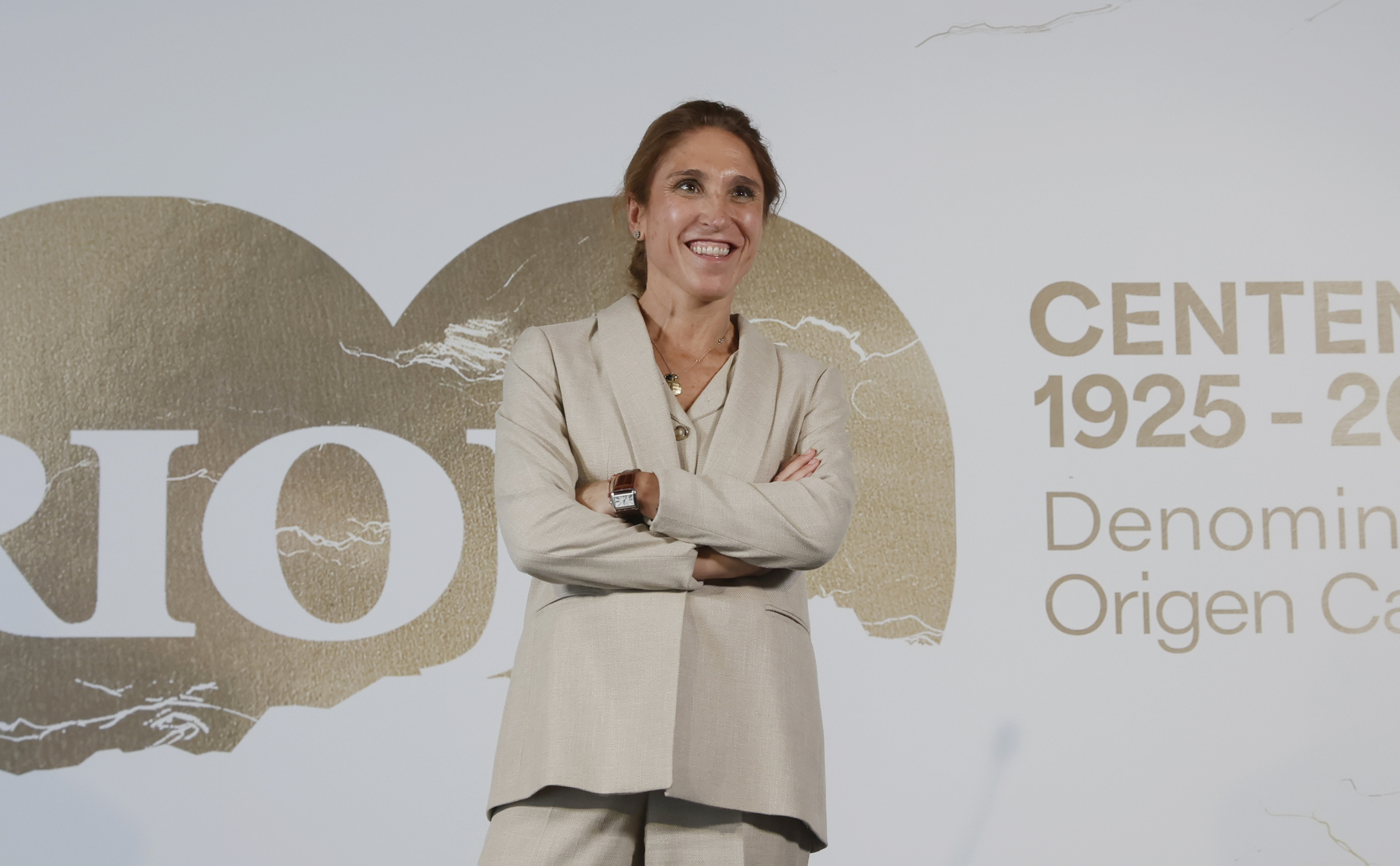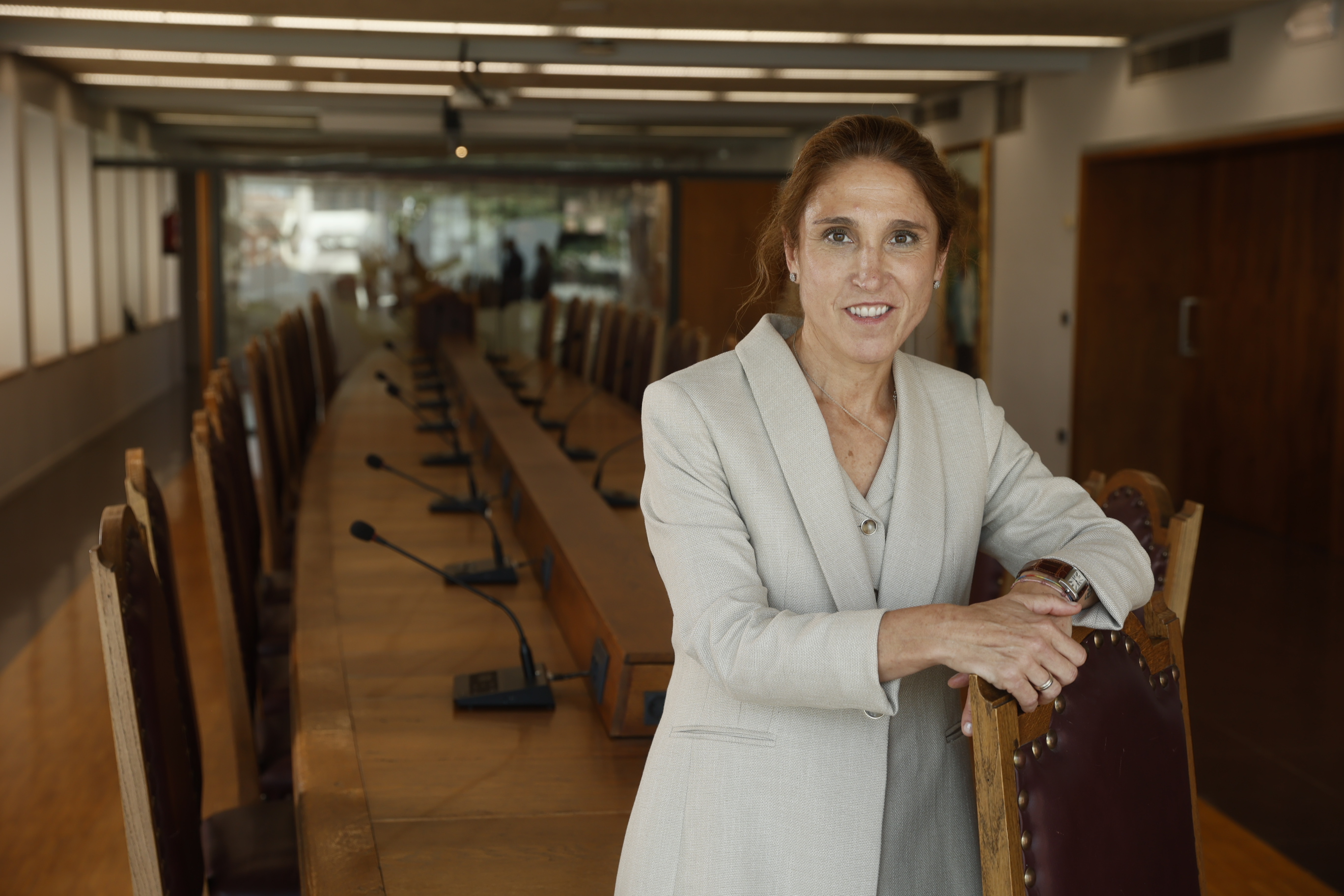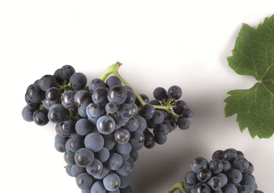Interview published in the November 2025 issue of the La Rioja Alta, S.A. Group magazine.
Four months have already passed since your appointment. Does time move too slowly or too fast when one is President of the Rioja Qualified Designation of Origin (D.O.Ca.) Regulatory Council?
When you live your work with passion and intensity, everything happens at incredible speed. It’s hard to believe that only four months have passed since I took office — practically with the harvest at the doorstep — and there is still much of Rioja’s Centenary celebration, our annual campaign, and numerous events ahead. We haven’t stopped for a moment. In such a period of activity, every hour and every day count, because both the position and the moment demand absolute dedication. And that’s not even mentioning all the behind-the-scenes work that doesn’t make headlines but is essential.
Your debut has coincided with Rioja’s Centenary, the new tariff announcement, and a challenging harvest. You must admit, your arrival has been exciting.
Very exciting. I was completely certain it would be. I said it the day I took office: I came to give my all during these four years because Rioja deserves the best of us. Some things need to evolve — and we will make it happen. In fact, we already are. Also, living through the Centenary of our D.O. means that activities multiply. But I’m happy, and I feel strong and determined to face these four years without letting my guard down.

All this while maintaining your position as Managing Director at Bodegas Ontañón. How do you manage both responsibilities without burning out?
I’m a winemaker at heart. It’s a passion I inherited from my parents and grew up with. Rioja is a land of vineyards and wineries, and I love being part of my family’s, which was born from an overwhelming passion — years and years of tireless work and devotion. I prepared myself thoroughly, and thanks to speaking three languages, I’ve been able to tell Rioja’s story around the world. Nearly thirty years spent among vineyards, in wineries, and boarding planes — it shapes you; it gives you character and a winemaker’s skin in which I feel completely fulfilled and happy. And within our family, we’ve built a great team of extraordinary professionals who now allow me to delegate with complete confidence. At the Regulatory Council, I’ve also found a committed and capable team.
Let’s talk about the recently finished 2025 harvest in Rioja. What is your overall assessment of a campaign that was a real challenge for growers and wineries but that seems to have ended on a more positive note in terms of grape quality?
It’s practically over, though not entirely, and while it’s still a little early for a definitive assessment, we can already say it’s been a demanding campaign — especially from a viticultural standpoint — but very positive in terms of quality. I want to highlight the growers’ effort, their ability to adapt swiftly and handle complex challenges like rain, hail, or disease outbreaks. It has been a shorter harvest, but one of great quality. They’ve produced healthy, balanced grapes with enormous potential. Now, it’s time for our wineries to showcase their expertise and transform that excellent work in the vineyard into great Rioja wines — up to the standard of excellence this Denomination demands.
That satisfaction contrasts sharply with widespread concern about the sector’s declining quality of life, reduced production, and low grape prices. Some even speak of sadness in the Rioja countryside. Do you share and worry about this diagnosis?
I wouldn’t call it satisfaction. What I do feel is deep pride in the professionalism of those in the field who have faced a “perfect storm” of hardships — mildew and hail devastating many vineyards — and in the hard work of the wineries during a very demanding cycle from which we expect great results. And let me make something clear: the Regulatory Council is not responsible for setting grape prices. The market does that, under government regulation through the Food Chain Law. My concern goes further. I said it in my inaugural speech: I want vineyard work — and rural work in general — to be a real life choice, one with a viable future. People, especially young people, should be able to choose it freely. What cannot happen is that those who want to take that path find it impossible and give up. There’s so much to contribute. The countryside must be profitable.
What measures are needed to restore motivation and well-being among those who work the vineyards — a sector so essential to the regional and national economy — and ensure generational renewal?
This must be a shared goal among all economic and social stakeholders, across the region and the country. One of Spain’s souls lies in its rural essence — in the importance of the land, not only economically but also culturally and in terms of identity. It’s part of who we are. Realistically, everything depends on wine regaining its social prestige and significance in consumption. Every player in the chain must take responsibility; all administrations must be involved in promoting rural life so that people choose to stay — not out of necessity, but as a life choice, with faith in their future.
One of the novelties this year was the reduction of authorized yields for red grapes and the increase in finished-product controls. How do you assess the effectiveness of these measures to prioritize quality and balance?
It was an act of responsibility by the Council. The general reduction of yields to 90% was unanimously approved before I took office. To clarify: yields weren’t reduced later — rather, maximum yields were assigned per municipality based on real conditions observed in the field. This was a particularly difficult campaign, and we decided to act early to preserve quality, our top priority. We did our job — guaranteeing origin and quality for Rioja wines. We relied on our predictive and monitoring tools using AI, and on the experience and fieldwork of our technical teams. We also allowed growers to request upward reviews for specific plots, since total yield limits remained unchanged. In short, it reflects the self-demand that defines all of us in Rioja.
How would you view greater freedom in vineyard practices that, while respecting yield limits, allows for clearer differentiation in grape pricing based on quality?
Once again, the Regulatory Council doesn’t set grape prices. Each winery negotiates with its suppliers based on different parameters. It’s logical that better products command higher prices — as in any business. Our regulations define maximum yields and ensure compliance, alongside oversight of vineyard practices, always based on quality, origin, and sustainability.
Another major issue is the global decline in wine consumption. In this difficult context, isn’t it sensible to fully commit to a “premiumization” model that reinforces Rioja’s position among the world’s great wines instead of a volume-driven model with lower prices?
I’m not sure what is meant by a “volume and low-price model.” Rioja must continue betting on quality — whether one bottle is made or a million. The only sensible and necessary path is excellence, across all consumer segments: from the most exclusive wines to those enjoyed every day. Wine has always been part of social life. We must analyze the causes of this global consumption decline and offer new ideas, new horizons, and quality wines for all who seek them. Rioja is uniquely positioned to provide those answers.
And let’s not forget: despite everything, Rioja remains Spain’s favorite wine, maintaining market share. In a turbulent international market, exports held up well, and overall sales grew nearly 1% last year — not enough, because we always want more, but it’s proof of our resilience in tough times. That strength comes from sustained quality, recognized and trusted by consumers. By continuing along the path of quality, diversity, and authenticity — from our varied portfolio to our return-to-origin philosophy — Rioja can meet the needs and desires of all wine lovers.

For years, the Association of Quality Wineries has called for clearer differentiation between wines that guarantee Rioja’s quality standards and those that don’t, to prevent unfair competition. What’s your view?
Rioja always guarantees quality — that’s what’s brought us here, celebrating a Centenary that no other Spanish D.O. can match. Rioja’s recognized quality has been key to our success. Rioja has been a Qualified Designation of Origin since 1991 — the highest level — and was the first in Spain to achieve it. That status was earned, not granted. We’ve always been self-demanding, and with “Qualified” status comes stricter regulations — such as mandatory bottling at origin. We continue to raise the bar, for example by strengthening the tasting panel to make it one of the most rigorous systems in the world. There are no shortcuts in Rioja: everything is subject to the strictest controls. Quality is not a goal — it’s a shared commitment. Being Rioja means certainty, traceability, and excellence.
Would it make sense to move toward a model in which representation is based more on value than volume — where those who contribute more to the Rioja brand are better represented on the Council?
We’ve already worked in that direction. Representation isn’t only based on volume but also on the average export price per category. A liter of Crianza is not valued the same as a liter of Reserva. And new measures can still be taken if the sector agrees. In fact, this year, a reform was approved to increase representation for those whose average sales value is twice the market average. These are gradual, coherent steps forward.

In recent years, some voices — especially from Rioja Alavesa — have called for greater differentiation. What message would you send to those who still feel their identity isn’t sufficiently recognized?
I deeply admire Rioja Alavesa — its wines, its people, its landscapes, and its history, which fully deserves recognition. Each subzone has its own unique charm and character. A wine from San Asensio isn’t the same as one from San Vicente, just as one from Kripán differs from one from Lanciego — or from my hometown of Quel and Murillo de Río Leza. That diversity is the very essence of Rioja.
Rioja was born from a historic alliance among towns and wineries, long before the D.O. formally existed. It arose from the need to protect and distinguish what was genuinely Rioja — and excellent. We’ve recalled these origins throughout the Centenary. In recent years, we’ve developed new tools to express that diversity: Viñedos Singulares, Vinos de Pueblo, zone mentions, native varieties — all ways to highlight the uniqueness of each territory. I believe the path is not separation, but building together. The recent ruling on Viñedos de Álava confirmed that Rioja’s model works and embraces all sensibilities. My message is clear: Rioja is a shared project where everyone belongs — and that has been true for over 100 years. Diversity isn’t a threat; it’s our strength. That’s what brought us here, and that’s what will guide us confidently into the future.
























